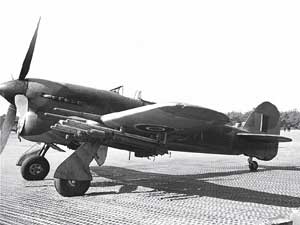Free Republic University, Department of History presents
World War II Plus 70 Years: Seminar and Discussion Forum First session: September 1, 2009. Last date to add: September 2, 2015.
Reading assignment:
New York Times articles delivered daily to students on the 70th anniversary of original publication date. (Previously posted articles can be found by searching on keyword “realtime” Or view
Homer’s posting history .)
To add this class to or drop it from your schedule notify Admissions and Records (Attn: Homer_J_Simpson) by freepmail. Those on the Realtime +/- 70 Years ping list are automatically enrolled. Course description, prerequisites and tuition information is available at the bottom of Homer’s profile.
To: Homer_J_Simpson
2 posted on
02/24/2010 5:33:05 AM PST by
Homer_J_Simpson
("Every nation has the government that it deserves." - Joseph de Maistre (1753-1821))
To: Homer_J_Simpson
I got $10 riding on ‘Come on Sam’.
12 posted on
02/24/2010 5:55:23 AM PST by
dfwgator
To: Homer_J_Simpson
13 posted on
02/24/2010 6:11:24 AM PST by
ecomcon
To: Homer_J_Simpson
Day 87 of the Winter War, February 24, 1940
Karelian Isthmus: the Finnish 23rd Division takes advantage of a momentary lull in enemy pressure to attempt a counterattack to improve their defensive positions to the east of Lake Näykkijärvi.
Photo: SA-KUVA
Finnish troops take Reuhkavaara 'motti'
- Karelian Isthmus: the Finnish 23rd Division takes advantage of a momentary lull in enemy pressure to attempt a counterattack to improve their defensive positions to the east of Lake Näykkijärvi.
- The counterattack is launched at 2.30 a.m., but almost immediately breaks down. At daybreak the Finnish troops withdraw to their defensive positions.
- Enemy attacks on the intermediary defensive positions are unsuccessful.
- In the north, the Finnish guerrillas operating in Salla are suffering from stiffer countermeasures by the Soviet troops in the area.
- The independent Company Kojonen pulls off a successful surprise attack on a Red Army logistics centre at Kuusivaara in Salla, causing considerable losses among the Soviet troops.
- In Petsamo, a 180-strong enemy ski company attacks Heteoja, bringing to an end a phase of guerrilla activity which had lasted almost two months. They are surrounded by Finnish troops, but half their strength manage to break out.
- In Kuhmo, Finnish troops take the Reuhkavaara 'motti'.
- Enemy dead total 174. Finnish casualties are three dead and five wounded.
- The Finns capture a considerable amount of materiel, including two tanks, four lorries and over 200 small arms.
- Finland's Foreign Minister meets the new British diplomatic representative in Finland, Mr. Vereker, and the military envoy, General Ling, who has just visited General Headquarters in Mikkeli.
- According to Vereker, the Allies are ready to send 20,000 soldiers to Finland on March 15.
- The exhibition of captured war materiel in Helsinki Exhibition Hall is a great success. 13,000 people have visited the exhibition during the first week alone.
- The foreign ministers of Norway, Denmark and Sweden meet in Copenhagen.
- The Nordic countries make a joint decision not to give military assistance to Finland nor to allow foreign troops to pass through their territory. Finland therefore stands alone.
17 posted on
02/24/2010 8:31:06 AM PST by
CougarGA7
(In order to dream of the future, we need to remember the past. - Bartov)
To: Homer_J_Simpson
Maiden Flight of the Hawker Aviation TyphoonFrom the World War II Database at www.ww2db.com

Contributor: C. Peter Chen
The Typhoon fighters were designed as the replacement for the Hawker Hurricanes. The design began in Mar 1937 by Sidney Camm. It received the confirmation to continue in Jan 1938 when the design matched what the British Air Ministry was requesting in the next generation of fighters. The first fighter of this design took flight in Oct 1939 with a Rolls-Royce engine; it immediately impressed the Royal Air Force, but the first batch of these fighters delivered was full of problems. The original designation for these new fighters was Tornado, and they suffered compression effects and a slow climb performance. The next batch, delivered in Feb 1940, named Typhoon, suffered from a damaging engine vibration problem. The design was cancelled by the RAF in May 1940, but in Oct 1940 the demand for aircraft gave this design another chance. In early 1941 the first Typhoon fighters rolled off the production line (actually, their design was of the Tornado). The first few fighters were rushed to the front lines to dogfight with the German Fw 190 fighters, and they performed poorly; their tails sometimes broke off when pulling out of dives. Subsequent Typhoon fighters were equipped with strengthening plates at key locations to remedy this problem. Another problem these production Typhoon fighters suffered was the leak of exhaust fumes into the cockpit, which required the pilots to always use oxygen. Despite the problems, the Typhoon design continued to be in production due to the demands of the war.
19 posted on
02/24/2010 9:04:29 AM PST by
CougarGA7
(In order to dream of the future, we need to remember the past. - Bartov)
To: Homer_J_Simpson
Just an FYI, I updated my profile to include my current library of reading and resources for World War II.
24 posted on
02/24/2010 12:14:40 PM PST by
CougarGA7
(In order to dream of the future, we need to remember the past. - Bartov)
FreeRepublic.com is powered by software copyright 2000-2008 John Robinson



